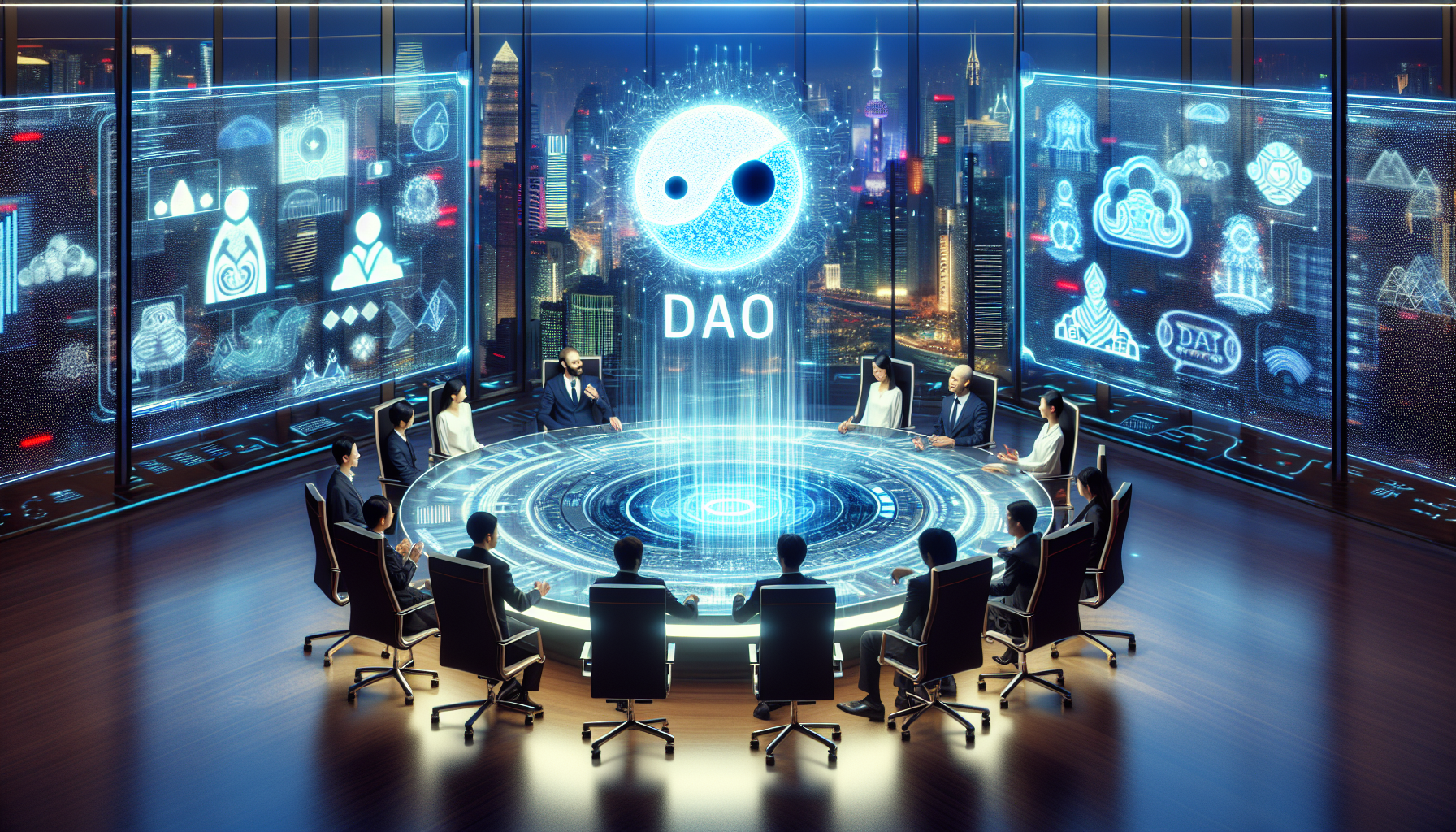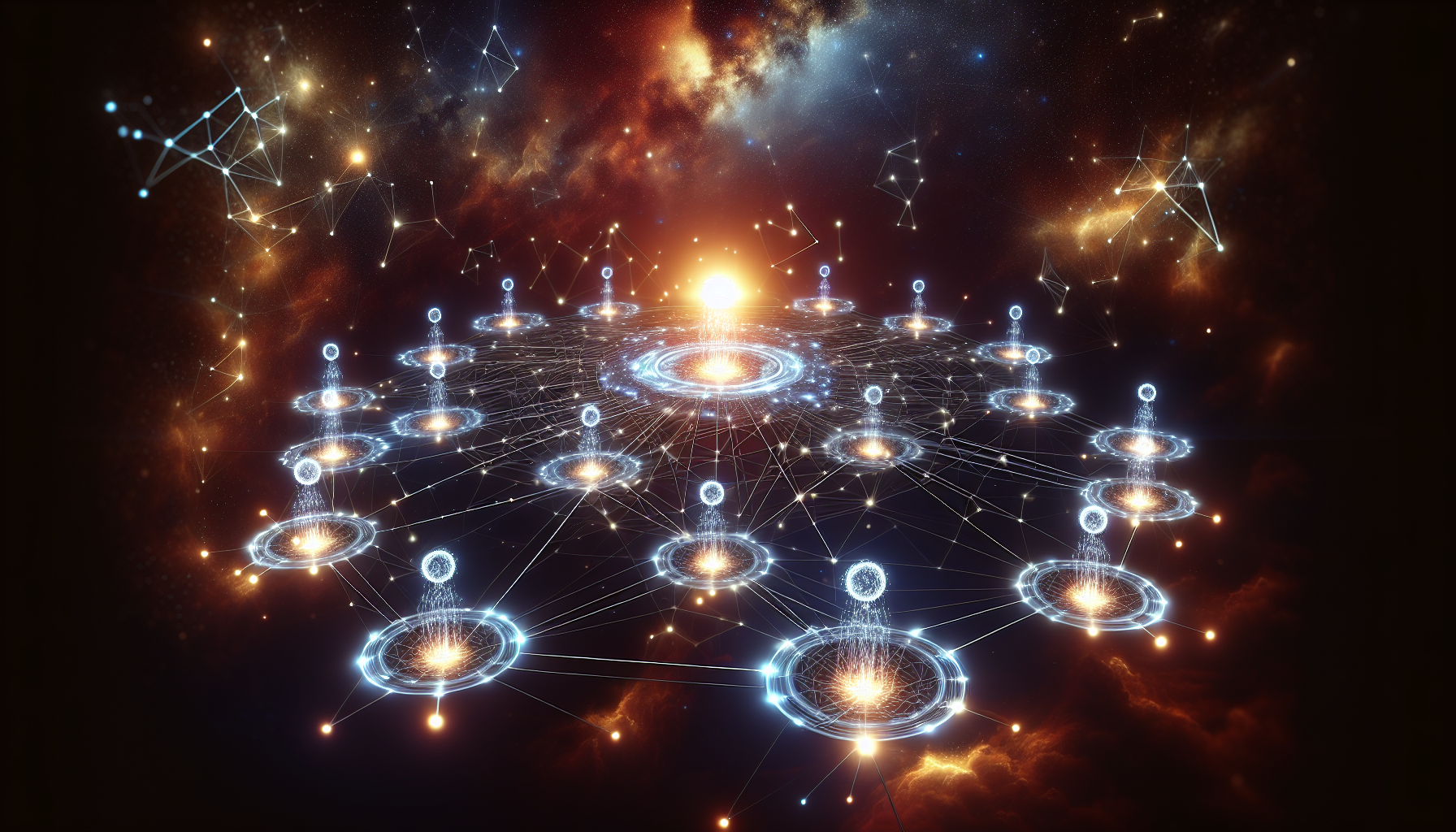Short Answer:
Is Web3 the future? Web3 signals a future of a decentralized internet, leveraging blockchain for user empowerment and data ownership. This iteration promises a shift from centralized control, introducing decentralized apps and community governance, potentially revolutionizing user interaction and digital economy.
Introduction & Background
As a seasoned attorney with a rich background in venture capital, M&A, and private equity transactions, my interest in the legal and structural foundations of Decentralized Autonomous Organizations (DAOs) and Web3 technologies is deeply rooted in my professional journey. With over a decade of experience at top-tier law firms, I’ve been at the forefront of major real estate transactions and ventured into the intricate world of venture capital at an AM Law 200 firm. This exposure has provided me with a unique perspective on the transformative potential of blockchain technology in reshaping traditional business and governance models.
The shift towards a decentralized internet, powered by Web3, represents a fundamental change in how users interact with digital platforms, emphasizing ownership, privacy, and direct participation. My academic background, including teaching entrepreneurial law, has equipped me with a critical understanding of the legal intricacies and potential of decentralized systems. This, combined with my hands-on experience in complex transactions and venture capital, positions me to explore the nuances of DAOs and smart contracts with an authoritative lens. In this era of digital transformation, I leverage my expertise to contribute to the discourse on how blockchain technology is not just redefining the landscape of digital transactions but also challenging our conceptions of governance and community-led initiatives.
Key Takeaways
-
Web3 represents a move toward a decentralized internet where users have increased control over their data, communities operate on decentralized apps without central oversight, and blockchain technologies underpin secure digital interactions.
-
Decentralized Autonomous Organizations (DAOs) are altering business and governance by providing participatory structures where decisions are made collectively by members, showing potential for a more equitable digital commons.
-
Smart contracts in Web3 are setting the stage for more secure, efficient, and automated online transactions, extending beyond financial uses to sectors like supply chain management, energy, and entertainment.
Understanding Web3: The Decentralized Internet Era
At the forefront of the new internet era is Web3, the next iteration of the world wide web, harnessing blockchain technology to foster a decentralized digital economy. This third iteration,is a stark departure from the centralized models of Web 2.0, presenting a future where users command greater control and ownership of their data and where communities can flourish on decentralized apps without the oversight of central authorities.
The decentralized web is not just a concept; it’s a burgeoning reality that could redefine the future of the internet.
From Static Web Pages to Dynamic Ecosystems
Tracing back to the early internet, Web 1.0 offered static web pages that served as mere information repositories. This evolved into Web 2. and web 3.0 however a more dynamic web where users could not only consume but also produce content, giving rise to social media and e-commerce.
Today, Web 3.0 promises even more: a decentralized web where not only is content user-generated, but also the very ecosystems themselves are governed by those users, leaving behind the centralized control of the past.
Empowered Users and Ownership
Web3 technology ushers in an era where users are no longer passive consumers but active participants with real stakes in the platforms they use. The paradigm shift is profound: from the centralized model and‘walled gardens’ of big tech companies to a decentralized landscape where users have true ownership and control.
This shift is evident in the rise of decentralized apps which enable users to engage with more control, access a wide array of services, and directly monetize their content without intermediaries.
The Role of Blockchain Technologies
Blockchain technologies are the bedrock of the decentralized internet, offering a secure and transparent way to manage digital assets and identity. In the decentralized web, smart contracts automate trust and transactions, while decentralized finance (DeFi) reimagines economic systems without the need for central authority or traditional banking institutions.
Blockchain’s immutability ensures that every user action, from identity verification to asset management, is recorded permanently, establishing a trustless and permissionless environment.
The Rise of Decentralized Autonomous Organizations

In the decentralized finance world, Decentralized Autonomous Organizations (DAOs) are gaining traction, operating independently of central authority and governed by the collective decisions of their members. This shift represents a fundamental change in business and governance, the next era where organizations are no longer hierarchical but participatory.
Through DAOs, employees and stakeholders alike can have a direct say in decision-making processes, fundamentally altering traditional power dynamics. within companies
Shifting Power Dynamics
The emergence of DAOs signals a move towards a more equitable digital commons, where every user is empowered with voting rights and the opportunity to participate in governance. While DAOs promise to democratize decision-making, they also face the challenge of maintaining trust and quality in a system that relies heavily on collective consensus.
These organizations are reshaping marketplaces into community-run environments, a stark contrast to the centralized models of the past.
Case Studies of DAO Implementation
The theoretical benefits of DAOs are made tangible through real-world implementations such as Decentraland and Steem. In Decentraland, governance is executed by users who hold the MANA token, while Steem has integrated blockchain technology to incentivize content creation. These examples showcase the actionable potential of DAOs and how they embody the decentralized ethos of Web3, offering a glimpse into the future of online communities and economies.
Smart Contracts and Their Role in Web3

Smart contracts are revolutionizing the way agreements are executed in the blockchain era. As self-executing contracts with the terms of the agreement embedded in code, they offer an array of advantages including enhanced security, speed, and programmability.
By facilitating direct peer-to-peer transactions, smart contracts are rendering traditional intermediaries obsolete, driving down costs and boosting efficiency in the decentralized web.
Beyond Financial Instruments
The applications of smart contracts extend beyond the confines of financial instruments. They are revolutionizing industries like:
-
Supply chain management, providing real-time updates and enabling automated transactions for IoT devices
-
Energy, ensuring the regulated issuance of credits
-
Entertainment, streamlining the distribution of royalties
These innovations are just the beginning, as smart contracts are set to transform governance, regulatory compliance, and even academic credential verification.
Preventing Cyber Attacks
As cybersecurity becomes increasingly critical, smart contracts are emerging as a formidable line of defense against cyber attacks. Their encryption and immutable records provide a secure foundation for managing online interactions, automating security protocols, and leaving a clear audit trail. However, their security is only as strong as the code they’re built on, necessitating vigilant audits to prevent exploitation and ensure robust defenses against cyber threats.
Can Decentralization Mainstream? The Challenge of Widespread Adoption
While the decentralized web offers a compelling vision of the future, the path to widespread adoption is fraught with challenges. The technical complexity and scalability concerns of blockchain technologies present a significant barrier to entry for many users.
The question remains: can these hurdles be overcome to allow for rapid growth and mainstream acceptance of Web3, or will the decentralized internet remain a niche domain for the technically proficient?.
User Experience Hurdles
To bridge the gap between the current iteration of the internet and a decentralized future, user experience must be a top priority. Simplifying interfaces, providing jargon-free explanations, and creating intuitive designs are essential steps in making Web3 accessible. Furthermore, educational resources will play a critical role in helping users navigate the complexities of this new technology.
Only by addressing these user experience hurdles can the decentralized web hope to reach the masses.
Speed and Scalability Issues
Another major concern for the decentralized internet is the speed and scalability of its platforms. As the user base grows, the ability of Web3 to handle increased traffic without sacrificing performance is paramount.
The decentralized web must prove that it can support rapid growth while maintaining, or even improving, the speed of transactions to rival that of its centralized predecessor.
The Intersection of AI and Web3
The confluence of artificial intelligence and Web3 technologies has the potential to create a new internet era of unprecedented personalization and efficiency. AI’s capacity to process complex datasets and make autonomous decisions can enhance user experiences across the decentralized web.
As we integrate AI into Web3, we’re laying the groundwork for an internet network that’s not only more secure and transparent but also more responsive to individual user needs.
The Semantic Web Vision
Web 3.0, or the Semantic Web, represents the next iteration of the internet, where artificial intelligence and machine learning shape a world wide web that functions as a ‘global brain’. This vision espouses a web that can understand data like humans, delivering faster, more relevant results and fostering a more connected digital world.
The intertwining of these two concepts – AI and Web3 – could ultimately transform our online interactions and the very fabric of the internet.
Enhancing Personalization and Efficiency
AI’s role in Web3 goes beyond powering the semantic web; it’s about enhancing the personalization of online services and improving efficiency. of data everywhere By analyzing user behavior, AI algorithms can tailor experiences to individual users, offering greater control and transparency.
In the context of community management, AI can streamline operations, providing a more engaging and efficient user experience. This integration of AI with Web3 paves the way for more intelligent and responsive online services.
Digital Economy and NFTs: New Frontiers of Web3

The digital economy is undergoing a transformation with the advent of non-fungible tokens (NFTs), which have exploded onto the scene, revolutionizing how creative work is tokenized and traded. With blockchain technology underpinning this new market, NFTs are reshaping the digital economy, offering creators and consumers new ways to engage with content and each other in the new internet era.
Tokenizing Creative Work
For digital artists and designers, NFTs represent a paradigm shift, allowing them to:
-
Create unique, tokenized pieces that ensure secure ownership and payment
-
Sell their work globally without intermediaries
-
Receive full compensation for their efforts
This blockchain-based innovation empowers creators to take control of their art and digital assetsand monetize it in a new and exciting way.
The rise of platforms like Audius exemplifies how Web3 technologies can give creators more control and higher profits from their work.
Impact on the Gig Economy
The NFT market’s meteoric rise has also had a profound impact on the gig economy, creating new opportunities for freelancers, especially in creative fields. The increasing demand for NFT-related services has led for exampleto a surge in both listings and earnings, demonstrating the market’s potential to provide substantial income for gig workers.
As freelancers navigate this burgeoning market, they are finding new ways to leverage their skills in the digital economy.
Social Media Platforms in the Age of Web3

As we venture deeper into the Web3 era, social media platforms are undergoing their own transformation. The rise of decentralized networks is reshaping the way we think about online interactions and content sharing. In this new landscape, platforms are emerging that prioritize user empowerment, privacy, and community-driven governance.
The integration of SocialFi and blockchain is revolutionizing social networking, creating economic opportunities for users and challenging the dominance of big tech companies.
The Shift Towards Decentralized Networks
The fabric of social networking is being rewoven around decentralized networks, where users have unprecedented control and autonomy. These networks, operating on a myriad of independently run servers, offer a haven for those seeking resistance to censorship and a more secure management of user-generated content.
As privacy concerns mount against centralized platforms, decentralized alternatives like Mastodon and LBRY emerge, underscoring a commitment to user privacy, security, and a pivot away from centralized control. This shift is driven by a desire for greater transparencyand a community-centric approach, hallmarks of the decentralized internet era.
Potential for New Forms of Online Communities
The Web3 landscape is fertile ground for cultivating new forms of online communities, yet this decentralized environment comes with its own set of challenges. While the potential for positive outcomes is vast, ranging from enhanced connectivity to robust knowledge sharing, the largely unmoderated nature of these platforms can lead to extreme and sometimes negative consequences.
Concerns around data loss due to potential network shutdowns and privacy of communications within these new communities loom large. Despite these challenges, the exciting possibilities of decentralized social networks beckon many users to explore this new technology frontier.
The Long-Term Vision: What Could a Web3 Future Look Like?
As we peer into the horizon, a Web3 future teems with transformative potential, reshaping commerce, communication, and the essence of our online experiences. With decentralization at its core, this future promises greater data ownership, allowing individuals to control their own data, transparency, and trust, fostering an environment where businesses and individuals alike can thrive. Yet, this vision also carries with it ethical and legal implications that must be navigated with care.
The long-term impact of Web3 could be as monumental as the advent of personal computers and smartphones, but its trajectory is still being charted.
Transformations in Commerce and Communication
The decentralization of commerce in Web3 is not merely a theoretical concept; it’s a burgeoning reality. With blockchain technology at the helm, businesses can engage with consumers through token-gated commerce and immersive metaverse experiences, revolutionizing how transactions and interactions occur online. Cryptocurrencies are redefining financial transactions, while NFTs offer novel loyalty incentives, providing tangible value to consumers.
These advancements in Web3 are carving out new paths for companies and consumers, demanding a reevaluation of traditional business models and communication strategies in the digital age.
The Ethical and Legal Implications
A Web3 future will necessarily involve grappling with complex ethical and legal questions. As users gain more control over their data, the responsibility to manage it ethically becomes paramount. Privacy concerns, compliance with evolving legal standards, and maintaining transparency are all critical considerations as we navigate this new terrain.
Community governance models in Web3 must also prioritize ethical practices, ensuring inclusivity and fairness in decision-making processes. The conversation surrounding these issues will be vital in shaping a Web3 future that is both innovative and responsible.
Summary
To summarize, Web3 stands at the precipice of a new internet era, one that is decentralized, user-centric, and ripe with opportunities for innovation and empowerment. From the transformative potential of DAOs and smart contracts to the integration of AI and the burgeoning digital economy through NFTs, the decentralized web is redefining the paradigms of ownership, commerce, and social interactions. As we contemplate the challenges of mainstream adoption and the ethical and legal implications, it is clear that Web3 carries the promise of a more equitable and transparent digital world. The future of the internet is not just an iteration; it’s a revolution.
Frequently Asked Questions
What is the future outlook for Web3?
The future outlook for Web3 looks promising, with a focus on building trust and loyalty between brands and consumers. The sector is projected to experience significant growth, with a CAGR of 44.6% from 2023 to 2030.
Is Web3 just hype?
Web3 is largely considered hype, especially by industry insiders with no stake in cryptocurrency. It’s reminiscent of the skepticism faced by Web 2.0 in the past.
Is Web3 the future?
Yes, Web 3.0 is inevitable as it is the future of technology and will soon become essential for businesses. The expansion of the Web 3.0 sector indicates its inevitability, according to several experts.
What is Web3 and how does it differ from the current internet?
Web3 is the next iteration of the internet, utilizing blockchain technology to enable a decentralized digital economy, in contrast to the centralized control of Web 2.0. This evolution allows for more access andgreater user control and ownership of data.
How do DAOs change the traditional business and governance models?
DAOs fundamentally change traditional business and governance models by shifting decision-making from hierarchical structures to a participatory model that aligns stakeholder interests and democratizes the process, creating a more inclusive and transparent approach to governance.


